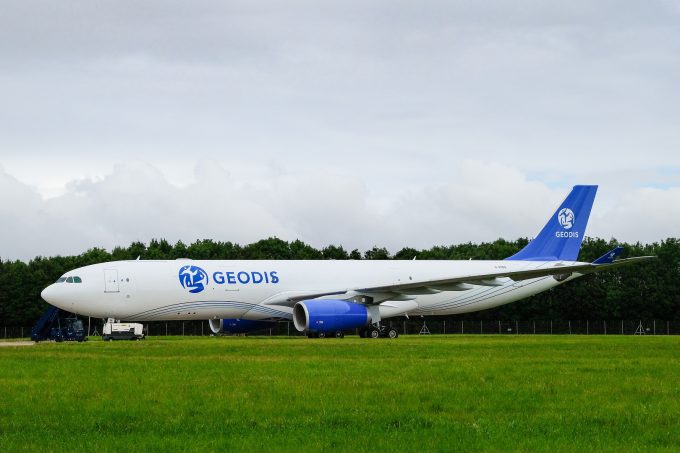Cathay Cargo aims for flexibility in bullish Hong Kong airfreight market
Cathay Cargo is committed to being “flexible” this year, in the face of global uncertainty ...
KNIN: HOLDINGAAPL: WHAT TO EXPECT THIS WEEKBA: ANOTHER UPDATEBA: UNDER SCRUTINYJBHT: STATUS QUO GM: PARTNERSHIP UPDATEEXPD: NOT SO BULLISHEXPD: LEGAL RISK UPDATE WTC: LOOKING FOR DIRECTIONTSLA: SERIOUS STUFFF: STOP HERE
KNIN: HOLDINGAAPL: WHAT TO EXPECT THIS WEEKBA: ANOTHER UPDATEBA: UNDER SCRUTINYJBHT: STATUS QUO GM: PARTNERSHIP UPDATEEXPD: NOT SO BULLISHEXPD: LEGAL RISK UPDATE WTC: LOOKING FOR DIRECTIONTSLA: SERIOUS STUFFF: STOP HERE

Ecommerce continues to be air cargo’s star performer, dominating China’s export market and absorbing capacity to Europe and the US, according to a senior industry executive.
“The overall market in 2024 so far has produced decent growth in general cargo [+3%], complemented by a heavy surge in ecommerce business driven by the new Chinese market entrants,” Geodis’s EVP freight forwarding, Eric Martin-Neuville, told The Loadstar.
“This has led to global growth of approximately 10%, significantly above the various forecasts. Capacity has continued to grow on the back of the demand increase and we are now in ‘a Covid period-type’ situation where anything that can fly is in the air to accommodate the ecomm flows.
“This has led to firm prices that have stabilised at a rather high level. Not only is ecommerce pulling capacity from scheduled commercial routes but from charter type activity too, making the latter more costly.”
Imbalance in trade
Ecommerce is traditionally a high-volume/low-value type business, reflected in the (relatively low) rates and one that does not require a lot of added-value services on top of the airport-to-airport carriage, Mr Martin-Neuville explained.
“While this remains the case, like any other verticals, ecommerce is impacted positively or negatively by market conditions, and what is noteworthy is that the segment does make long-term commitments (with regard to volume and capacity).”
Commenting on the imbalance in trade that ecommerce has largely brought about on major air cargo routes – load factors out of Asia being extremely high and into Asia much lower than usual – and the challenge this poses for forwarders, he noted: “The imbalance is more related to supply than to demand. The large number of dedicated ecommerce flights are creating a significant surge in backhaul capacity which is putting pressure on the market and on pricing.”
Turning to other major verticals for air cargo, hi-tech and pharma were performing well. Those which have been less successful include traditional fashion retail, which has seen tonnage drop and, under economic pressures, has favoured ocean freight to air. Meanwhile, luxury goods, especially into China/APAC, have seen a drop in demand, resulting in some modal shift to cheaper and lower-carbon ocean alternatives.
Comparing current volumes, revenue and rate levels with pre-pandemic 2019, Mr Martin-Neuville said that, excluding the low-value cross-border ecommerce business, demand remains below 2019 by close to 4%.
“However, the overall tonnage carried, including ecommerce, is greater than it was in 2019 [5% above that year]. To cater for this growth, capacity has increased by close to 7%, but prices remain higher than 2019 due to fuel costs and the general inflation level.”
Ocean to air
The extended lead times created by the re-routing of container vessels around the Cape of Good Hope are contributing to the demand growth in air cargo.
“This concerns urgently required components and parts, but also a partial return to air routes of goods which had been moved to ocean as a result of supply chain redesign to lower logistics costs and reduce CO2 emission levels.”
The market in general has been anticipating considerable pressure on access to capacity as the peak season gathers momentum. However, Mr Martin-Neuville revealed that, in the first few weeks post-Golden Week (in China), the squeeze on space has not been as severe as expected.
“This might be explained in part by Thanksgiving [in the US] being rather late this year, which tends to push back Black Friday sales.”
Outlook
He said forecasting had become very much a gamble, due to the volatility of geopolitical events – the Ukraine/Russia conflict and attacks on ships entering the Red Sea. Policy changes as a consequence of elections could also have a major impact on global trade in general, and ecommerce in particular.
“Europe appears to be in a low phase of its economic cycle, while the US may be starting to bounce back. China was not only the manufacturing centre of the world, but had also become a major market of high-end consumer goods consumption. This has decreased dramatically – but could resume just as quickly in the event of an economic turnaround. As for India, trade growth may be faster than anticipated or, on the contrary, face barriers.”
Comment on this article